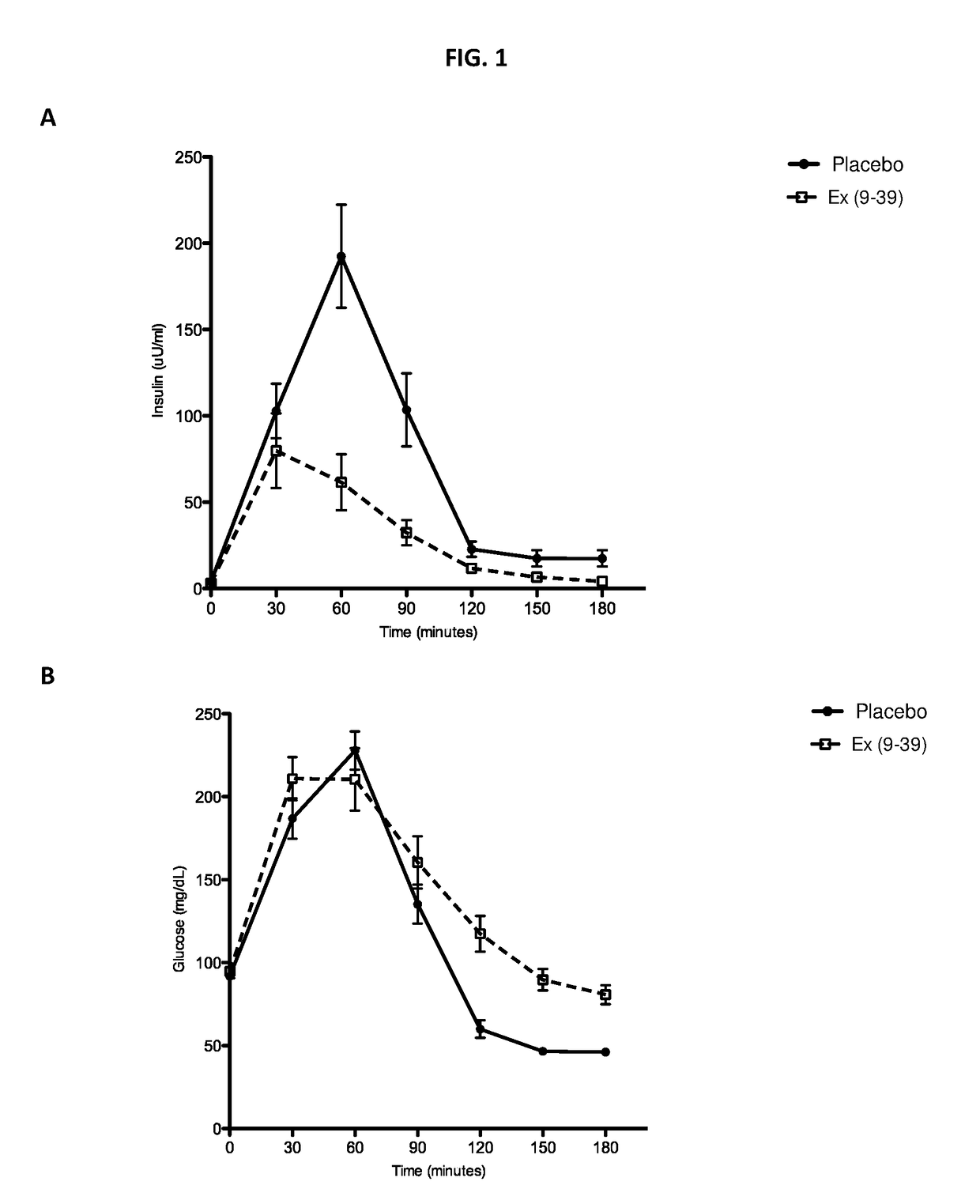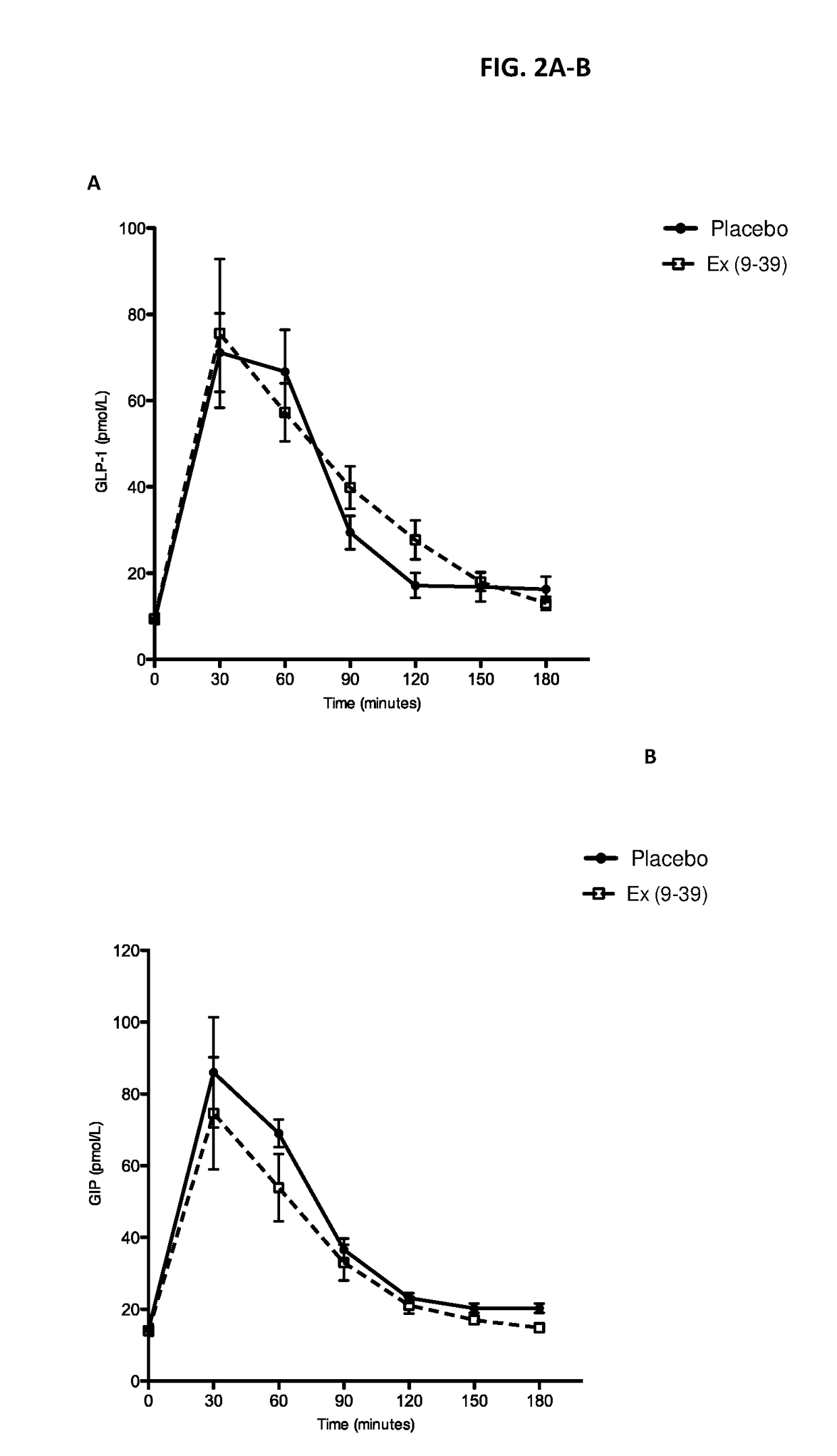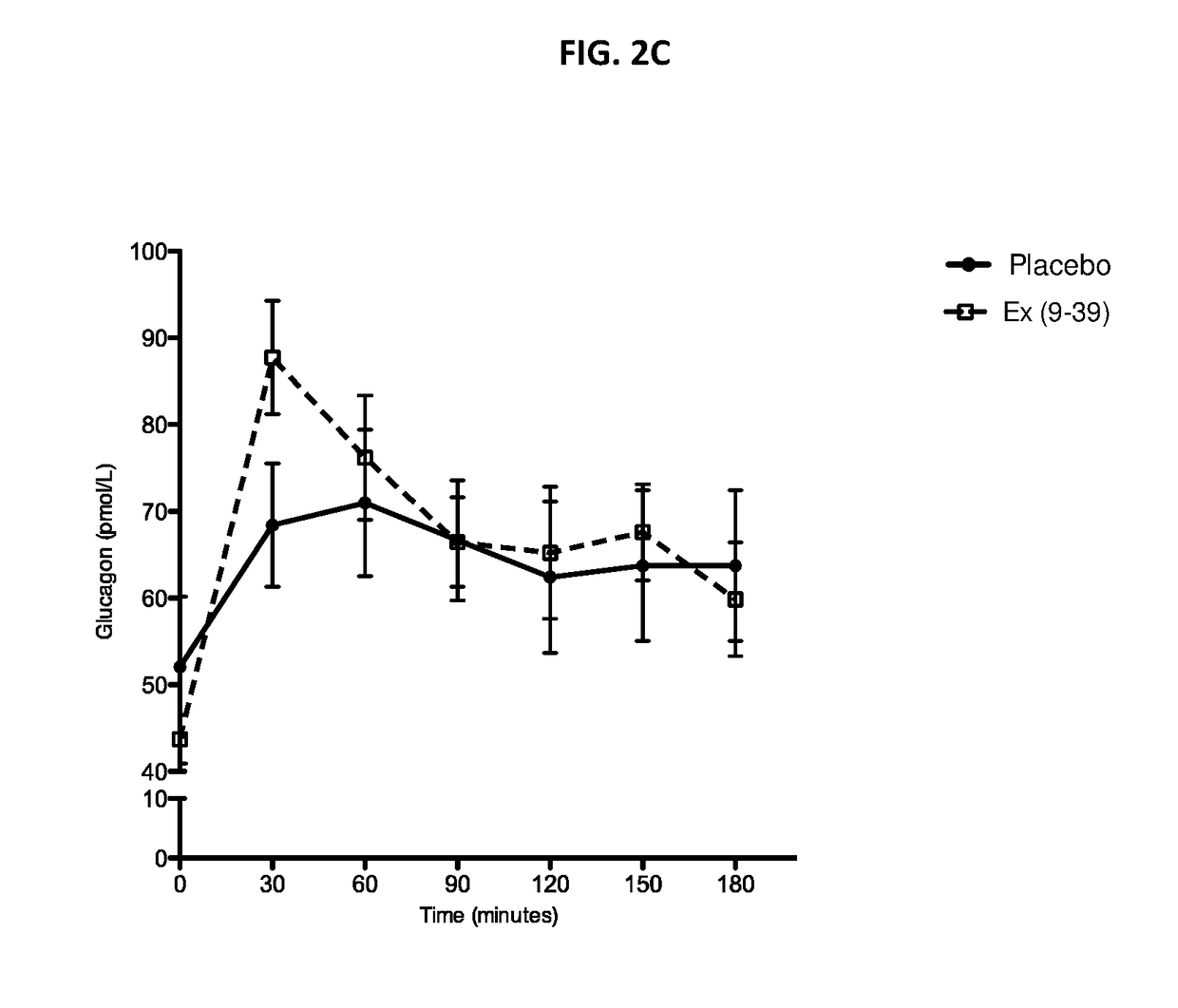Treatment of post-bariatric hypoglycemia with glp-1 antagonists
a technology of glp-1 and hypoglycemia, applied in the field of post-bariatric hyperinsulinemia, can solve the problems of not being a practical or realistic outpatient treatment method, and achieve the effects of improving the treatment of hyperinsulinemic, prolonging the therapeutic effect, and reducing the risk of side effects
- Summary
- Abstract
- Description
- Claims
- Application Information
AI Technical Summary
Benefits of technology
Problems solved by technology
Method used
Image
Examples
example 1
4.1 Example 1
Continuous IV Infusion of Exendin(9-39) Effectively Reverses Hyperinsulinemic Hypoglycemia and Associated Symptoms
[0139]A randomized placebo-controlled blinded cross-over Phase 1 study was conducted to determine whether continuous IV infusion of exendin(9-39) can effectively reverse hyperinsulinemic hypoglycemia and associated symptoms. Exendin(9-39) was acquired as a lyophilized peptide: exendin(9-39) acetate 10 mg / vial from Bachem (Clinalfa, Läufelfingen, Switzerland). For preparation of the IV infusate, lyophilized exendin(9-39) was solubilized with 20 ml 0.9% normal saline (NS) for every 10 mg peptide, then diluted in 100 ml 0.9% NS and 50 ml of 25% human serum albumin, in a PVC-free, DEHP-free 1 L infusion bag. The bag was covered with an opaque IV bag cover to aid with blinding. An identical-appearing bag was prepared, constituting the placebo infusate, containing the same volume of infusate (NS only) without the presence of peptide or albumin Eight patients with ...
example 2
4.2 Example 2
Single IV Bolus Injection of Exendin(9-39) Reverses Hypoglycemia Only if Timed Coincide with Peak GLP-1 Plasma Concentrations
[0144]A trial was performed to assess whether a single bolus dose of exendin(9-39) was able to prevent hypoglycemia in a 75 gram OGTT with subjects with hyperinsulinemic hypoglycemia. Two subjects with hyperinsulinemic hypoglycemia were admitted to the research clinic after a 12 hour overnight fast. An IV bolus of 7,500 pmol / kg exendin(9-39) was prepared as in Example 1. The subjects consumed a 75 gram glucola at T=0. GLP-1 levels are predicted to peak about 60 min after the administration of glucola (see, Myint et al., European Journal of Endocrinology, 2012, 166:951-955; see also FIG. 4D). After consuming the glucola, the subjects were infused intravenously with an IV bolus of exendin(9-39) over 1 minute, with the timing of the IV bolus administration relative to the 75 gram OGTT altered on different days, as follows: T=0, T+20, and T+50. Plasma...
example 3
4.3 Example 3
A Single Dose of Subcutaneously Injected Exendin(9-39) Effectively Reverses Hyperinsulinemic Hypoglycemia and Associated Symptoms
[0149]As described above in Example 1, it was found that an IV bolus of 7,500 pmol / kg exendin(9-39) plus a continuous IV infusion of exendin(9-39) at a rate of 500 pmol / kg / min over 210 minutes was efficacious in reversing hyperinsulinemic hypoglycemia and associated symptoms. For the peptide exenatide, it has been reported that the absorption kinetics of exenatide in rats most closely approximates human absorption kinetics. See, Chen et al., Interspecies Modeling Pharm Res., 2013, 30:751-760. Rat intravenous and subcutaneous dose escalation pharmacokinetic data predicts that in humans, the Cmax of subcutaneously administered exendin(9-39) would be substantially lower than the Cmax of intravenously administered exendin(9-39). Accordingly, it was expected that a higher dose of exendin(9-39) would be needed for subcutaneous administration, as com...
PUM
| Property | Measurement | Unit |
|---|---|---|
| concentration | aaaaa | aaaaa |
| concentration | aaaaa | aaaaa |
| concentrations | aaaaa | aaaaa |
Abstract
Description
Claims
Application Information
 Login to View More
Login to View More - R&D
- Intellectual Property
- Life Sciences
- Materials
- Tech Scout
- Unparalleled Data Quality
- Higher Quality Content
- 60% Fewer Hallucinations
Browse by: Latest US Patents, China's latest patents, Technical Efficacy Thesaurus, Application Domain, Technology Topic, Popular Technical Reports.
© 2025 PatSnap. All rights reserved.Legal|Privacy policy|Modern Slavery Act Transparency Statement|Sitemap|About US| Contact US: help@patsnap.com



